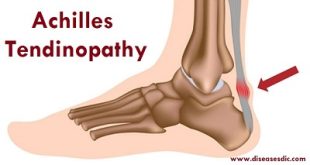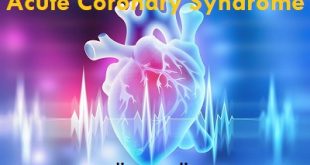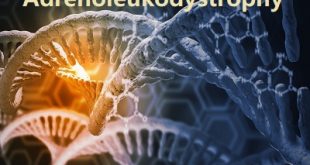What is Achalasia?
Achalasia is a serious condition that affects your esophagus. The esophagus is the tube that carries food from the throat to the stomach. The lower esophageal sphincter (LES) is a muscular ring that closes off the esophagus from the stomach. If you have achalasia, your LES fails to open up during swallowing, which it’s supposed to do. This leads to a backup of food within your esophagus. This condition can be related to damaged nerves in your esophagus. It can also be due to damage of the LES.
LES pressure and relaxation are regulated by excitatory (eg, acetylcholine, substance P) and inhibitory (eg, nitric oxide, vasoactive intestinal peptide) neurotransmitters. Persons with achalasia lack noradrenergic, non-cholinergic, inhibitory ganglion cells, causing an imbalance in excitatory and inhibitory neurotransmission. The result is a hypertensive non-relaxed esophageal sphincter.
Background
Sir Thomas Willis described achalasia in 1672. In 1881, von Mikulicz described the disease as a cardiospasm to indicate that the symptoms were due to a functional problem rather than a mechanical one. In 1929, Hurt and Rake realized that the disease was caused by a failure of the lower esophageal sphincter (LES) to relax. They coined the term achalasia, meaning failure to relax.
Epidemiology
Achalasia is an uncommon disorder with an annual incidence of approximately 1.6 cases per 100,000 individuals and prevalence of 10 cases per 100,000 individuals [1]. Men and women are affected with equal frequency. The disease can occur at any age, but onset before adolescence is rare. Achalasia is usually diagnosed in patients between the ages of 25 and 60 years. Achalasia may occur in association with adrenal insufficiency and alacrima in patients with triple A syndrome or Allgrove syndrome, a rare autosomal recessive genetic disorder
Causes
Achalasia can happen for different reasons. It can be difficult for your doctor to find a specific cause. This condition may be hereditary, or it may be the result of an autoimmune condition. With this type of condition, your body’s immune system mistakenly attacks healthy cells in your body. The degeneration of nerves in your esophagus often contributes to the advanced symptoms of achalasia.
Other conditions can cause symptoms similar to achalasia. Cancer of the esophagus is one of these conditions. Another cause is a rare parasitic infection called Chagas’ disease. This disease occurs mostly in South America.
Possible Risk factors
- Allgrove syndrome, also known as triple-A syndrome (AAA), or as Achalasia-Addisonianism-Alacrimia syndrome,
- Herpes infection
- Measles infection
- Autoimmune diseases
- HLA type 2
Symptoms and signs of Achalasia
The symptoms of achalasia include:
- Difficulty swallowing food
- Difficulty swallowing both solid and liquid food
- Regurgitation of food that is retained in the esophagus. If this happens at night, food may be aspirated into the lungs, a serious medical problem
- Chest discomfort from esophageal dilation and/or retained food
- Sharp chest pain usually of unclear cause
- Heartburn; however, the heartburn is not characteristic of heartburn and is not helped by treatment for heartburn
- Loss of weight due to reduced intake of food
- Frequent coughing
- Feeling as if there is always a lump in your throat
- Unintentional weight loss and/or malnutrition
Complications of achalasia
- Aspiration Pneumonia: This is the most serious complication of achalasia cardia but rare. In some cases due to sudden regurgitation process, gastric contents from the stomach enter in to the lungs leading to bronchopneumonia. Patient may present with sudden breathlessness, choking, vomiting episodes and respiratory distress.
- GERD- Long term immobility of the esophagus causing weakening of LES can lead to frequent regurgitation of the food contents to the mouth causing acid reflux disease. Patients normally present with epigastric pain, fullness after meals, water brash and indigestion.
- Esophagitis- Constant collection of food and gastric contents in the esophagus can irritate the mucosal lining causing inflammation of esophagus known as esophagitis.
- Perforation of esophagus- Chronic inflammation and irritation can also cause ulceration leading to formation of a hole in esophagus called esophageal perforation.
- Esophageal cancer: There is not much significant evidence medically about the correlation of esophageal cancer with achalasia cardia. However some patients who have been diagnosed with adenocarcinoma of esophagus have undergone dilatation procedure for achalasia conditions.
- Malnutrition: Prolonged weight loss due to inability to swallow liquids and solids can lead to significant weight loss which can affect the nutritional status of the individual.
Diagnosis and testing
Physician may suspect achalasia based on symptoms and physical examination. Achalasia should be suspected if patient have difficulty swallowing both solids and liquids and also regurgitation that has not resolved despite treatment with proton pump inhibitors.
- Esophageal manometry. This involves placing a tube in esophagus while swallowing. The tube records the muscle activity and makes sure your esophagus is functioning properly.
- An X-ray or similar exam of your esophagus may also be helpful in diagnosing this condition. Other doctors prefer to perform an endoscopy. In this procedure, doctor will insert a tube with a small camera on the end into esophagus to look for problems.
- Endoscopy also is helpful in the diagnosis of achalasia although it can be normal early in achalasia. Endoscopy is a procedure in which a flexible fiberoptic tube with a light and camera on the end is swallowed. The camera provides direct visualization of the inside of the esophagus.
- Barium swallow. The patient swallows a barium preparations (Liquid or other form) and its movement through the esophagus is evaluated using X-Ray.
Diagnosis of Achalasia patient by Barium swallow
Treatment and Medications
Treatment aims at opening or relaxing the lower esophageal sphincter muscles for easy passage of food into the stomach. Some of the options for relieving symptoms include:
- POEM: POEM or Per Oral Endoscopic Myotomy is a new treatment being offered to allow a myotomy to be performed using a gastroscope rather than having an operation. This latest treatment is offered by Mr Crosthwaite
- Medications: Medications help to relax the lower esophagus sphincter muscles and provide temporary relief such as nitrates, for example, isosorbide dinitrate (Isordil) and calcium channel blockers (CCBs), for example, nifedipine (Procardia) and verapamil (Calan).
- Botox injection: Botulinum toxin injection can be administered to help relax the sphincter muscles. It provides temporary relief only and has to be repeated after a few months or years.
- Balloon dilation (pneumatic dilatation): A small balloon is positioned at the lower esophagus sphincter and inflated to widen the opening. Although this procedure improves swallowing, it is not a permanent solution and needs to be repeated.
- Myotomy surgery: Myotomy is a surgical procedure in which the sphincter muscle is cut to open up the esophagus. This surgery provides a permanent solution to swallowing.
- Botulinum toxin: Endoscopic injection of botulinum toxin into the lower sphincter to weaken it. Injection is quick, nonsurgical, and requires no hospitalization
Prevention
Many of the causes of achalasia are not preventable. However, treatment of the disorder may help to prevent complications.
 Diseases Treatments Dictionary This is complete solution to read all diseases treatments Which covers Prevention, Causes, Symptoms, Medical Terms, Drugs, Prescription, Natural Remedies with cures and Treatments. Most of the common diseases were listed in names, split with categories.
Diseases Treatments Dictionary This is complete solution to read all diseases treatments Which covers Prevention, Causes, Symptoms, Medical Terms, Drugs, Prescription, Natural Remedies with cures and Treatments. Most of the common diseases were listed in names, split with categories.








I like the information about the disease very good… thank you doctor
am currently experiencing such. I feel something in my throat and this has been for the past 3 months now,please what advice can u give me tnx.
What information do you have about Intertichal lung disease
Will be updated soon. Stay tuned.